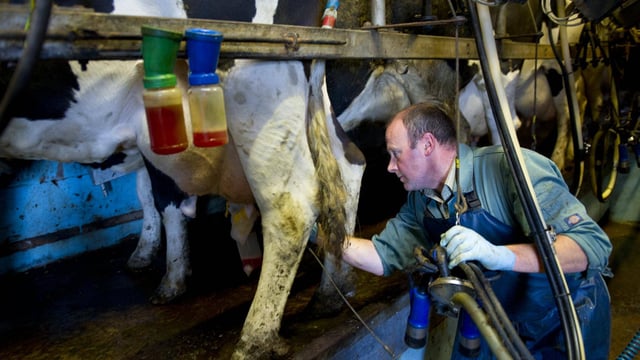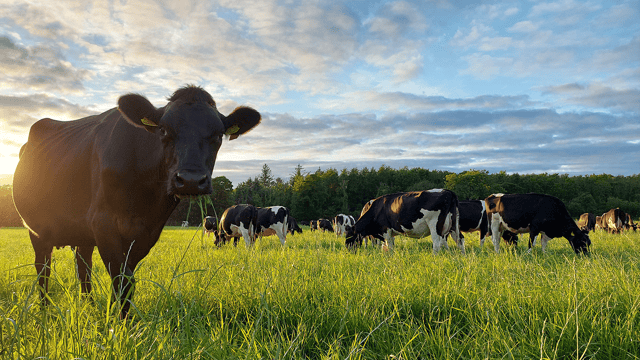DAFM has no milk-recording target set in advance of new EU regulations
Selective dry-cow therapy (SDCT) will be the norm from January 2022, as new EU veterinary medicines regulations (Regulation (EU) 2019/6) will make it illegal to prophylactically (preventively) use antibiotics. With just six months to go until these new regulations are in force, there is an element of pressure on farmers to start milk recording now.
By doing so, farmers can experience a smoother transition from blanket dry-cow therapy (BDCT) - which is a prophylactic treatment approach to mastitis - to SDCT, which treats only the animals showing signs of infection.
In the third instalment of our interview with chief veterinary officer (CVO) at the DAFM, Martin Blake, we look at the role of milk recording in reducing the use of antibiotics, and whether more farmers should be doing it.
No targets for milk recording
Recent data from the Irish Cattle Breeders Federation (ICBF) show that milk recording is on the uptake - just over 917,000 cows recorded to date in 2021, compared with just over 750,000 for the same period last year.
It is estimated that about 47% of the dairy herd is currently being milk recorded. AgClimatise - A Roadmap for Climate Neutrality, launched by the agriculture minister in December 2020, aims to see that figure increase to 90% by 2030.
But that is a long way off. What about the in-between time, particularly when we know the positive effects of milk recording and, especially, with the looming changes to antibiotic usage?
According to the CVO, the DAFM has no targets set for the number of farmers it wants to see milk recording by January 2022.
It is, he said, up to industry - processors, milk recorders and farmers - to lead the way on this.
Benefits of milk recording
The benefits of milk recording are well established:
According to Teagasc, it results in a mean improvement of 4% in gross margins, 7% in milk yields, and 25% in herd-level SCC.
Critically, it reduces the use of antibiotics, which is in line with one of the aims of the new EU veterinary medicines regulations, to prevent antimicrobial resistance, which is the ability of bacteria to render the antibiotics used to treat infections ineffective.
Out with BDCT, in with SDCT
Uptake
When asked about the uptake of milk recording among Irish farmers, the CVO said while he is aware that it is increasing, the fact is that not all farmers will partake in it.
"But that might not take in every farmer and it would be naive to think that every farmer will just sign up for milk recording.
"It is challenging, it is an extra chore, it is extra work for farmers.
However, he added that within the Animal Health Ireland (AHI) framework - AHI coordinates our national mastitis control programme, which promotes SDCT - there are "very significant conversations happening" with the processing industries and dairy farmers in relation to milk recording.
ICOS concern
In its submission to the Joint Oireachtas Committee on Agriculture, Food and the Marine, in relation to the new veterinary medicines, the Irish Co-operative Society (ICOS) highlighted a number of concerns relating to the move from BDCT to SDCT.
While citing milk recording as a key component to proper SDCT management, it said it would take time, education and resources to do it.
So what about that point, and the farmers who are currently not milk recording?
"It is not a black and white issue either, and we need to work towards a solution, particularly without data [from milk recording]. But the push is there to deal with dry-cow therapy over the course of the next 18 months," the CVO said.
And as mentioned, the DAFM's decision to not set a certain target for milk recording is based on its view that it it 'something for industry themselves' to look at.
"This is down to industry looking after itself in the context of putting in place a management tool that helps them in many ways, not just in relation to dry-cow therapy.
Earlier this year, the Kerry Group told its suppliers that they must start milk recording within the next 12 months. It is anticipated that this will be replicated more widely.
Passing the buck?
But with AMR and animal health to the fore here, should the DAFM be leading this and promoting greater uptake of milk recording? Is it not a case of the DAFM passing the buck?
The CVO disagreed.
"We are talking about people who are engaged in producing food for human consumption, and they have significant responsibilities to ensure that they are producing safe food and not creating problems.
"There has been significant investment by the State over the last 10 years in the dairy industry - it has been phenomenal," he said.
Don't rush into it
While the milk-recording route is recommended, the CVO said they [DAFM] are not recommending farmers to rush into it.
"But there is a need for people to engage with their veterinary practitioner and work through what is best for their individual farm."





